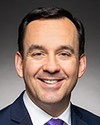Thank you, Mr. Chair.
Thank you for coming.
I'd like to start off, Monsieur Seguin and Madam Milligan, with the plan the CRTC has for addressing closed captioning. In my family, we have a rule: if it's not closed-captioned, we don't watch it. This meant that many years ago my kids said let's ditch the cable, dad; it's beyond useless. There's nothing worse than watching television and finding out what happens about a day later when the captions are coming up.
It also meant that we didn't watch a lot of Canadian movies, because Canadian movies didn't need to be captioned unless they were from Quebec. If they were from Quebec, we got to watch them because they had English subtitles. So we watched a lot of American action shows, because they actually caption their films and caption them well.
I'm looking at the CRTC's current approach, of 2040. Is that correct?





